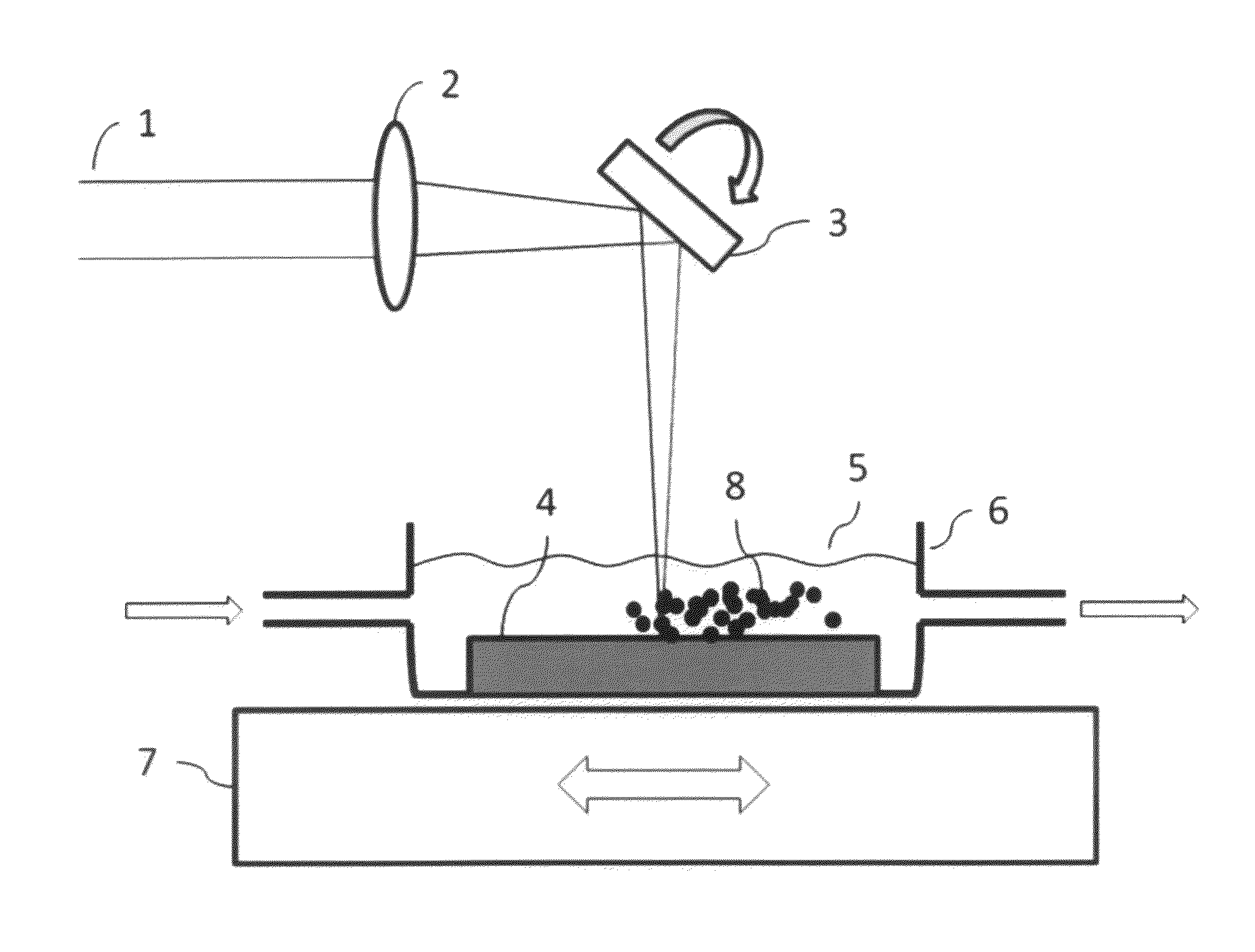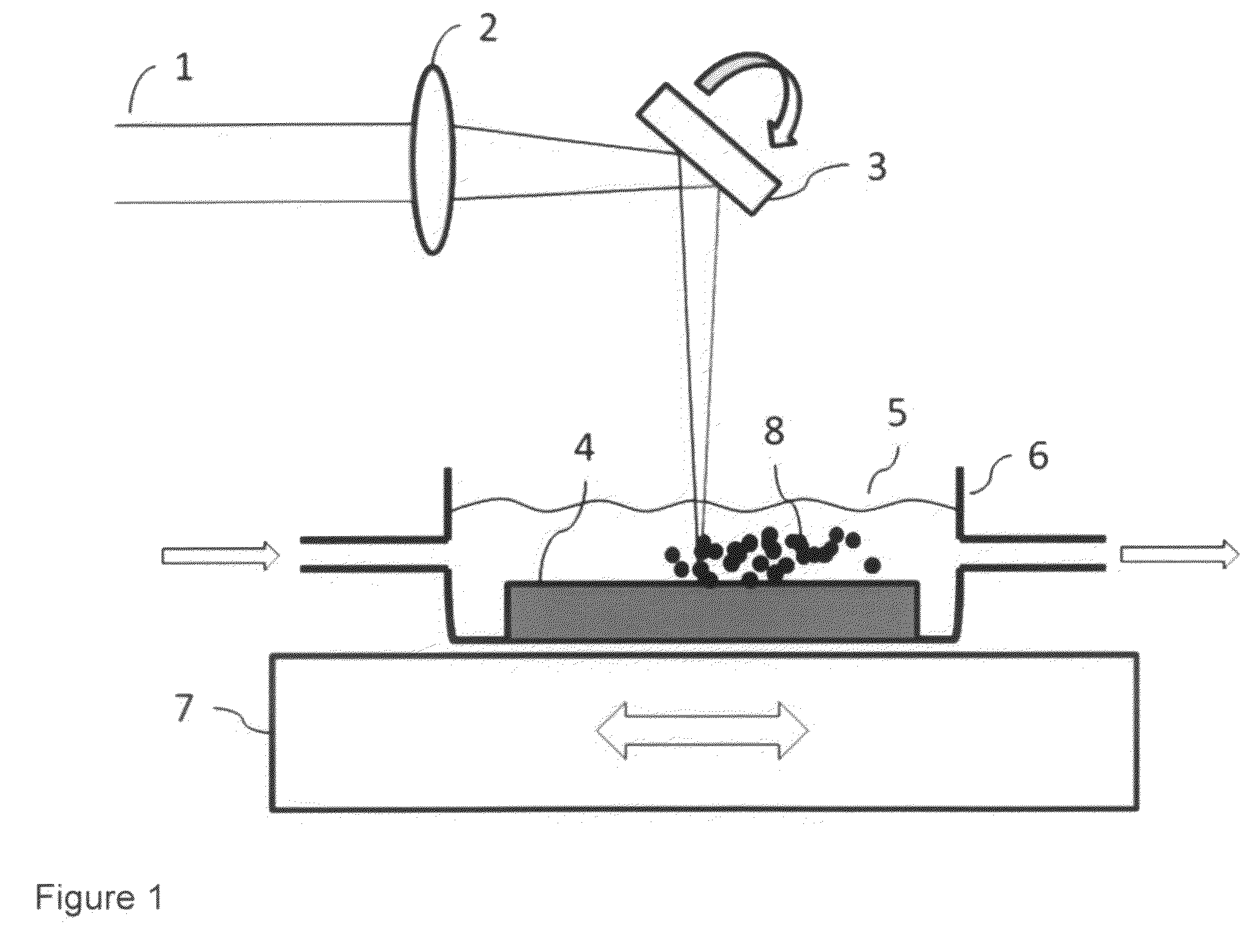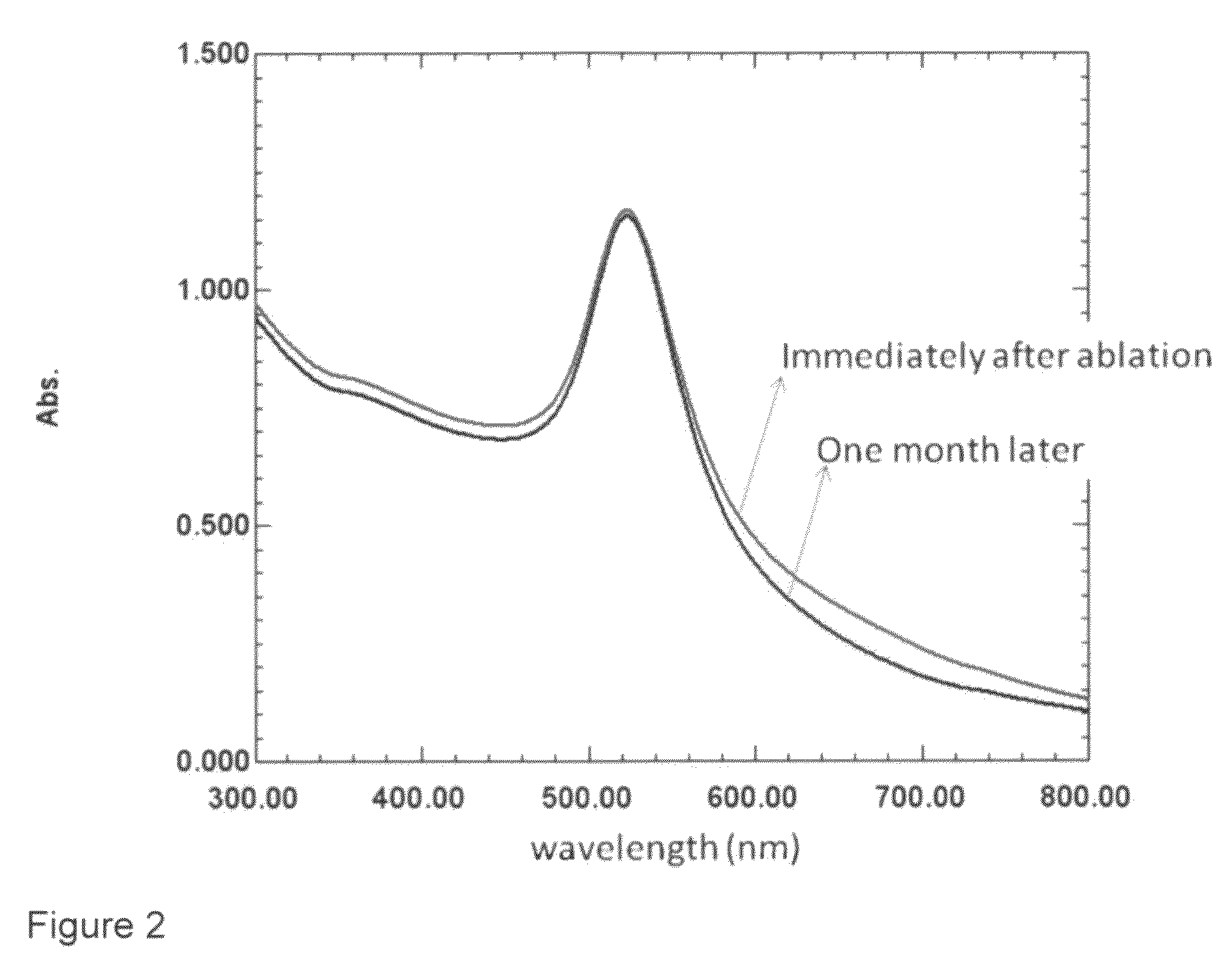Production of metal and metal-alloy nanoparticles with high repetition rate ultrafast pulsed laser ablation in liquids
a technology of laser ablation and metal alloys, applied in the field of pulsed laser ablation and nanoparticle generation, can solve the problems of colloid stability, colloid purity, variable plasmon resonance, etc., and achieve the effect of avoiding coagulation and rapid throughpu
- Summary
- Abstract
- Description
- Claims
- Application Information
AI Technical Summary
Benefits of technology
Problems solved by technology
Method used
Image
Examples
Embodiment Construction
”.
[0004]There are mainly two categories of methods of producing metal nanoparticles: chemical and physical methods. All chemical methods involve complex chemical agents for reducing the source compounds and stabilizing the colloid against coagulation. Taking gold nanoparticle as an example: one of the traditional chemical methods [Ref. 1] uses a reducing agent of sodium citrate to reduce chloroauric acid in a liquid such as water. The sodium ions also act as surfactant and prevent the gold nanoparticles from aggregation. In another traditional chemical process [Ref. 2], sodium borohydride is used as the reducing agent and tetraoctylammonium bromide is used as the stabilizing agent. Apparently a nanoparticle colloid made with these methods will contain many chemical ingredients in addition to the metal and the liquid. For many applications, these additional chemical ingredients can negatively affect the performance. For example, in biomedical and sensing applications, the stabilizing...
PUM
| Property | Measurement | Unit |
|---|---|---|
| frequency | aaaaa | aaaaa |
| frequency | aaaaa | aaaaa |
| speed | aaaaa | aaaaa |
Abstract
Description
Claims
Application Information
 Login to View More
Login to View More - R&D
- Intellectual Property
- Life Sciences
- Materials
- Tech Scout
- Unparalleled Data Quality
- Higher Quality Content
- 60% Fewer Hallucinations
Browse by: Latest US Patents, China's latest patents, Technical Efficacy Thesaurus, Application Domain, Technology Topic, Popular Technical Reports.
© 2025 PatSnap. All rights reserved.Legal|Privacy policy|Modern Slavery Act Transparency Statement|Sitemap|About US| Contact US: help@patsnap.com



